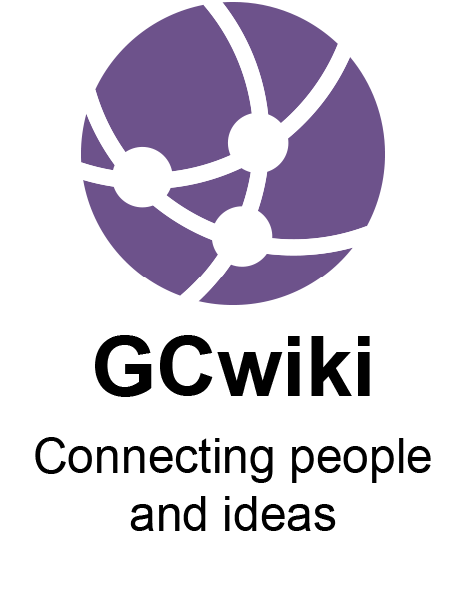Important: The GCConnex decommission will not affect GCCollab or GCWiki. Thank you and happy collaborating!
Difference between revisions of "GIS Day 2019 / Jour du SIG 2019"
(Intergovernmental GIS Day 2019 - a celebration of collaboration and partnership / Jour intergouvernmental du SIG 2019 - une fête de partenariat et de collaboration) |
|||
| Line 5: | Line 5: | ||
| Tracey Lauriault|| Keynote Address - Imagining Canada: How maps and stats help us know who we are | | Tracey Lauriault|| Keynote Address - Imagining Canada: How maps and stats help us know who we are | ||
Discours d’ouverture - Imaginer le Canada: comment les cartes et les statistiques nous aident à savoir qui nous sommes | Discours d’ouverture - Imaginer le Canada: comment les cartes et les statistiques nous aident à savoir qui nous sommes | ||
| − | || | + | || [https://drive.google.com/file/d/1VRJkmke6gvvpEv_8bVA70fc408oNdxoa/view English] |
| + | [http://French Français] | ||
|- | |- | ||
| Marian Radulescu || Data Exploration and Integration Lab (DEIL) | | Marian Radulescu || Data Exploration and Integration Lab (DEIL) | ||
Le laboratoire d’exploration et d’intégration des données (LEID) | Le laboratoire d’exploration et d’intégration des données (LEID) | ||
| − | || | + | || English |
|- | |- | ||
| François Sergerie || Determining Boundaries of Canada’s Downtown Residential Neighborhoods | | François Sergerie || Determining Boundaries of Canada’s Downtown Residential Neighborhoods | ||
Revision as of 17:11, 19 November 2019
| Speaker/ Orateur | Topic / Sujet | Presentation file / Fiche de présentation |
|---|---|---|
| Tracey Lauriault | Keynote Address - Imagining Canada: How maps and stats help us know who we are
Discours d’ouverture - Imaginer le Canada: comment les cartes et les statistiques nous aident à savoir qui nous sommes |
English |
| Marian Radulescu | Data Exploration and Integration Lab (DEIL)
Le laboratoire d’exploration et d’intégration des données (LEID) |
English |
| François Sergerie | Determining Boundaries of Canada’s Downtown Residential Neighborhoods
Déterminer les limites des quartiers résidentiels des centres-villes du Canada |
Example |
| Daniel De Lisle | The new RADARSAT Constellation Mission:
Bringing solutions to key challenges for Canadians La nouvelle mission de la Constellation RADARSAT : Fournir des solutions aux Canadiens sur des défis majeurs |
Example |
| Will MacKinnon | Canadian Geospatial Data Infrastructure
Infrastructure canadienne de données géospatiales |
Example |
| Simon Tolszczuk-Leclerc | Flood Risk Management – Coordinating Governance and Building Relationships
Gestion des risques d’inondation – Coordination de la gouvernance et établissement de relations |
Example |
| Jennifer Savoy | Flood Risk Management – Coordinating Governance and Building Relationships
Gestion des risques d’inondation – Coordination de la gouvernance et établissement de relations |
Example |
| Alice Born | Measuring the Impact of Spring Flooding in Canada
Mesurer l’impact des inondations printanières au Canada |
Example |
| Cameron Bouchard | Mapping Hazards at the Government Operations Centre
Cartographie des risques au Centre des opérations du gouvernement |
Example |
| Claude Guay | DFO’s Marine Spatial Data Infrastructure
L’infrastructure de données spatiales marines de MPO |
Example |
| Scott Tweedy | Foundational geospatial data: past, present and future
Données géospatiales fondamentales : passé, présent et futur |
Example |
| Matt Maloley | Indigenous Services Canada’s Geospatial Infrastructure
L’infrastructure géospatiale des Services aux Autochtones Canada |
Example |
| Dr. Blair Kennedy | Characterizing Arctic Vegetation and Ecosystems with Remote Sensing
Caractérisation de la végétation et des écosystèmes arctiques grâce à la télédétection |
Example |
| Kevin Arnel | Knowledge Management at the Canadian High Arctic Research Station (CHARS)
Gestion des connaissances à la Station canadienne de recherché dans l’extrème-Arctique (SCREA) |
Example |
